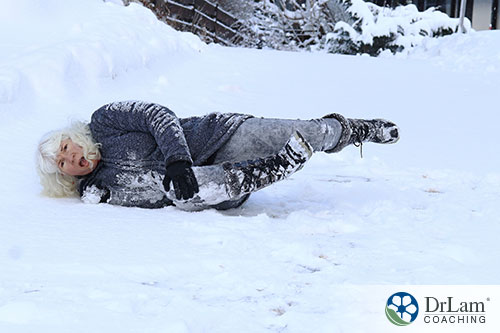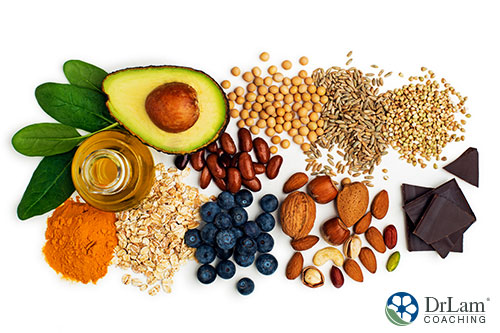 Having to live with joint pain is one of the most debilitating experiences. Joint pains usually flare up with a drop in temperature and/or increase in humidity. However, do not lose hope as there are many remedies for joint pain in cold. You should know what causes joint pain in cold, how cold exposure interacts with the joints, and what remedies for joint pain can be included in your daily life.
Having to live with joint pain is one of the most debilitating experiences. Joint pains usually flare up with a drop in temperature and/or increase in humidity. However, do not lose hope as there are many remedies for joint pain in cold. You should know what causes joint pain in cold, how cold exposure interacts with the joints, and what remedies for joint pain can be included in your daily life.
Researchers have tried to explain the reason for increased joint pain in cold. Some of the theories include:
In case, you are suffering from chronic joint pain, then an underlying inflammation is already present in your body. Chronic inflammation is an outcome of adrenal fatigue. Adrenal fatigue occurs when your body exhausts its cortisol level due to stress. Cold is perceived as additional stress on the body. It further precipitates the joint pain and stiffness.
You may develop increased sensitivity to the changes in barometric pressure if you have joint pain. It occurs when the cartilage that covers the bones inside a joint has been eroded. The nerves in the uncovered bones might sense the variations in pressure. Researchers found that in a group of 222 people with osteoarthritis of the hip for over 2 years, pain and stiffness got worse with rising barometric pressure and humidity. That's why sometimes people can tell when the weather is changing and when a storm is approaching when their joint ache worsens.
As the temperature drops, the fluid inside your joints becomes thicker. The outcome is stiffness and pain in the joints. Similarly, the changes in barometric pressure cause your tendons, muscles, and scar tissue to expand and contract. This results in joint pain, particularly in arthritis. Researchers have shown that in a survey of 200 people with osteoarthritis in their knee, every 10-degree fall in temperature and the barometric pressure was directly related to an increase in arthritis pain.
You might also experience a rise in pain when the weather prevents you from moving around as much as you do otherwise. People have a tendency to stay indoors when it is cold and rainy outside. As a result, inactive joints can develop an increased amount of pain and stiffness.
 The remedies for joint pain in cold weather act by reducing inflammation in your body. Inflammation is your body’s response to stress which can be physical or psychological and referred to as NeuroEndoMetabolic Stress Response (NEM). Cold weather poses physical stress on your body. This is similar to stress by infections, injuries, or trauma. Psychological stress is more of an emotional response. Nevertheless, in case you have underlying joint pain, it indicates that the body is already under stress.
The remedies for joint pain in cold weather act by reducing inflammation in your body. Inflammation is your body’s response to stress which can be physical or psychological and referred to as NeuroEndoMetabolic Stress Response (NEM). Cold weather poses physical stress on your body. This is similar to stress by infections, injuries, or trauma. Psychological stress is more of an emotional response. Nevertheless, in case you have underlying joint pain, it indicates that the body is already under stress.
During acute exposure to cold, your body rapidly increases cortisol to overcome the temporary phase. However, your body is already dealing with chronic stress as pointed by joint pain. Excessive and chronic stress can overwork the adrenal glands, inhibiting hormone output and causing the body’s natural coping mechanisms to fail. Adrenal Fatigue Syndrome (AFS) sets in as the adrenals are unable to cope up with stress. The hypothalamic-pituitary-adrenal (HPA) axis regulates this process through chemical messengers that determine your cortisol production. Adrenal fatigue shows different symptoms in different people. These include low blood pressure, sleeplessness, and fatigue in the early stages. Advanced stage symptoms include joint pain, anxiety, heart palpitations, low sexual drive, hypersensitivities to medication and food sensitivities.
NEM stress response of your body is composed of six circuits of organs and systems that work in collaboration against stress. The primary circuit that is associated with the action of the remedies for joint pain is the inflammation circuit. An unbalanced inflammation circuit is the outcome of adrenal fatigue. As the NEM stress response fails, even the smallest bodily stresses can seem unbearable because your body’s natural coping mechanisms have been slowed and overloaded.
The inflammatory response works in conjunction with other body systems and organs in stressful conditions to balance your bodily functions. The three components of the inflammation circuit include your immune system, gut, and microbiome. The word ‘microbiome’ consists of two parts: micro (meaning small), and biome, which includes all the characteristics found in an environment, involving the biotic (living) and abiotic (non-living) components.
The remedies for joint pain address the imbalances related to AFS. In the normal balanced state of your body, foreign microbes can not cause an inflammatory response in the body. However, when your immune system is weak, the exposure to external microbes will trigger a response in the inflammation circuit. This could lead to an increased risk of getting an infection in your joints. The remedies for joint pain suppress the inflammation and regulate the activities of the weak immune system against foreign microbes.
The remedies for joint pain facilitate the growth of good gut bacteria essential for correct food digestion, nutrient assimilation, and a strong immune system. Chronic stress usually leads to inflammation in your gut in the initial stages. This results in increasing the permeability of the lining of your gut. The noxious substances pass through the gut lining and set off your body’s immune system. Further, they may travel to different organs such as the skin, joints, brain, or heart where they start inflammation. When the digestion and absorption processes of your body are dysfunctional, it gets highly demanding for you to get the various nutrients, vitamins, and minerals required for normal function. This triggers joint pain, stiffness, and inflammatory conditions in the gut. This occurs in advanced stages of adrenal fatigue, which can mean good beneficial bacteria are replaced by foreign non-beneficial bacteria.
In this way, remedies for joint pain work to suppress the inflammation circuit, regulating the NEM response and the underlying adrenal fatigue.
The remedies for joint pain in cold consist of a combination of various modalities. They involve handling the changes in temperature, making changes in diet, exercise, sleep, and inclusion of hydrotherapy, natural pain killers, and supplements.
When temperatures decrease, protect yourself from cold. Keep warm by dressing in layers during the day with gloves and warm socks. You can also use an electric blanket, electric pad, and fomentation bottle to feel cozy. Besides, you should keep your home warm. You can use the central heating system, individual room warmers, or furnace to maintain the temperature of your home.
Diet plays a critical role in the recovery from adrenal fatigue and reducing inflammation in the joints. To begin with, eliminate foods that cause inflammation of the gut such as gluten, dairy, sugar, deep-fried foods, refined carbohydrates, alcohol, sodas, and any food or drink with chemical additives. This is accompanied by the inclusion of an anti-inflammatory diet as proposed by the American Arthritis Foundation. This includes increased amounts of vegetables, followed by proteins, healthy fats including nuts and seeds, legumes, beans, whole grains in your diet.
 Colorful fruits and veggies: the darker or more brilliant the color, the more the antioxidants. These include blueberries, cherries, spinach, kale and broccoli.
Colorful fruits and veggies: the darker or more brilliant the color, the more the antioxidants. These include blueberries, cherries, spinach, kale and broccoli.Since joint pain is a chronic condition, it requires increased amounts of rest and good sleep. For good quality sleep, avoid caffeine, go to bed at the same time each day, have a clean, dark room, rest for some time during the day.
The length and amount of exercise will depend upon the extent of your joint pain and fatigue. It is a good idea to start with some gentle stretches, slowly rising the intensity and length of physical activity as you regain your mobility and strength. You can also try yoga and swimming. Exercise will also help you maintain a healthy weight to avoid extra stress on the weak joints.
Hydrotherapy is one of the most effective remedies for joint pain. You can do a warm water bath or alternating hot and cold water bath. Researchers have shown that contrast baths involving the whole body or hands and feet increase the circulation of blood in your body. This helps in removing toxic products and increasing white blood cells in the affected joint. The outcome is a decrease in inflammation in the joint.
You can try also try a paraffin bath. It is a small machine that melts paraffin wax. You immerse your hands and feet in the wax. After this, the wax hardens on your skin. Your body draws in the heat, which provides relief to sore joints.
Natural pain killers include turmeric, apple cider vinegar, arnica, capsaicin, ginger, pineapple, and bromelain from pineapple stems. These can also be added to your diet. Topical solutions that deal with pain and muscle spasms include menthol, eucalyptus, and mint. For instance, researchers have revealed that there is sufficient evidence to recommend the use of turmeric in reducing pain and inflammation in the joints due to arthritis. It also aids in digestion at low doses. There is a risk of developing vitamin D deficiency in cold and lack of exposure to the sun. Also, the inflammation in the gut prevents the absorption of several nutrients. Therefore, various vitamins, minerals, and herbs can be taken as supplements in joint pain. Keep in mind to always consult your health coach before you start any supplement.
To sum up, you can do some things to restore your health in case you are suffering from joint pain in cold.

No matter what plan of action you decide to take, however, please seek advice from your healthcare practitioner who will assess your particular situation and advise which remedies for joint pain are right for you.
If you would like to get additional information about the remedies for joint pain, contact the team at Dr. Lam Coaching can help. We offer a free** no-obligation phone consultation at +1-626-571-1234.
The remedies for joint pain act by decreasing inflammation in various parts of your body. The remedies restore the imbalance in your body due to adrenal fatigue. They decrease the pain and stiffness of the joints, restoring their function and mobility.
